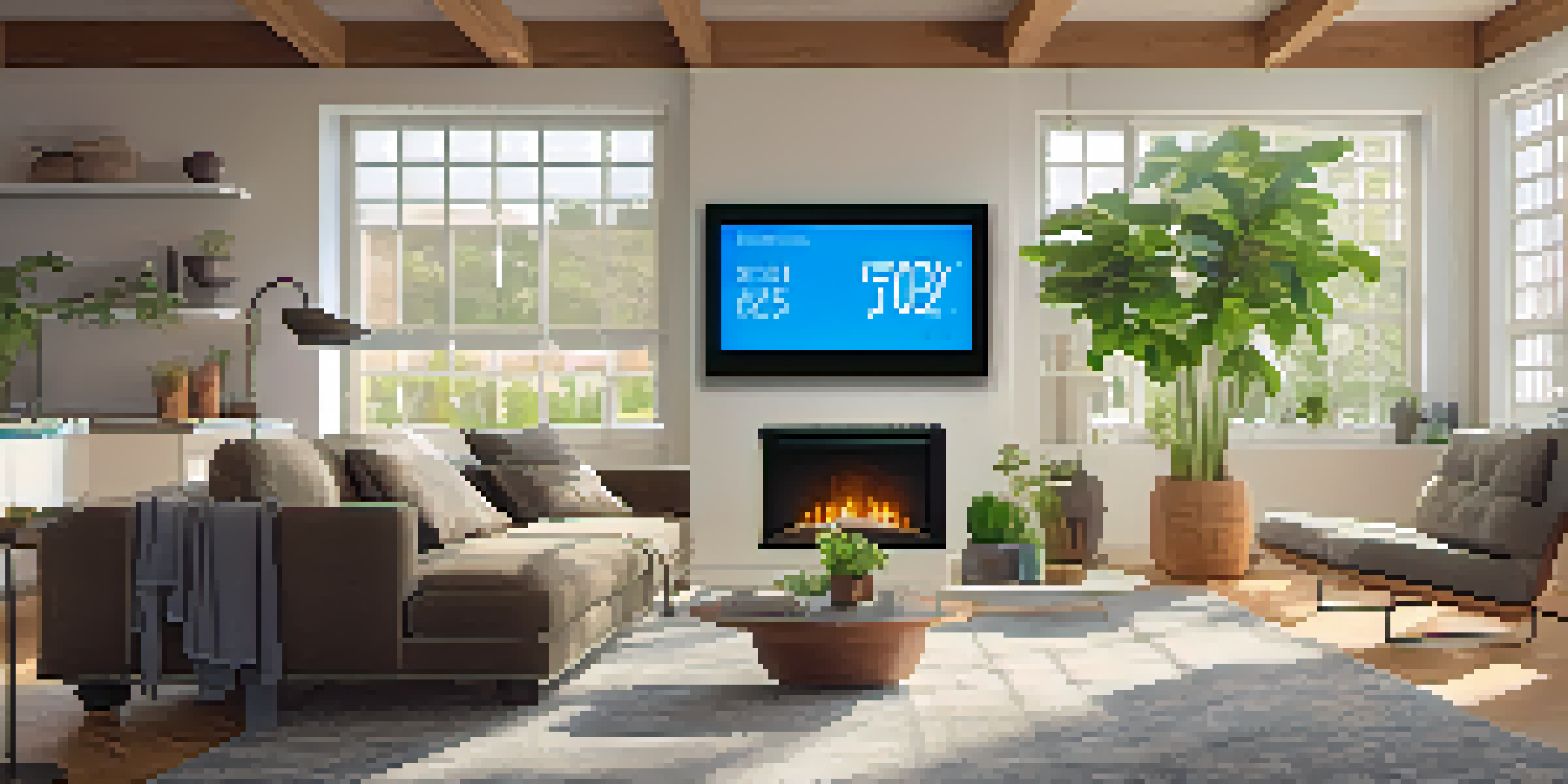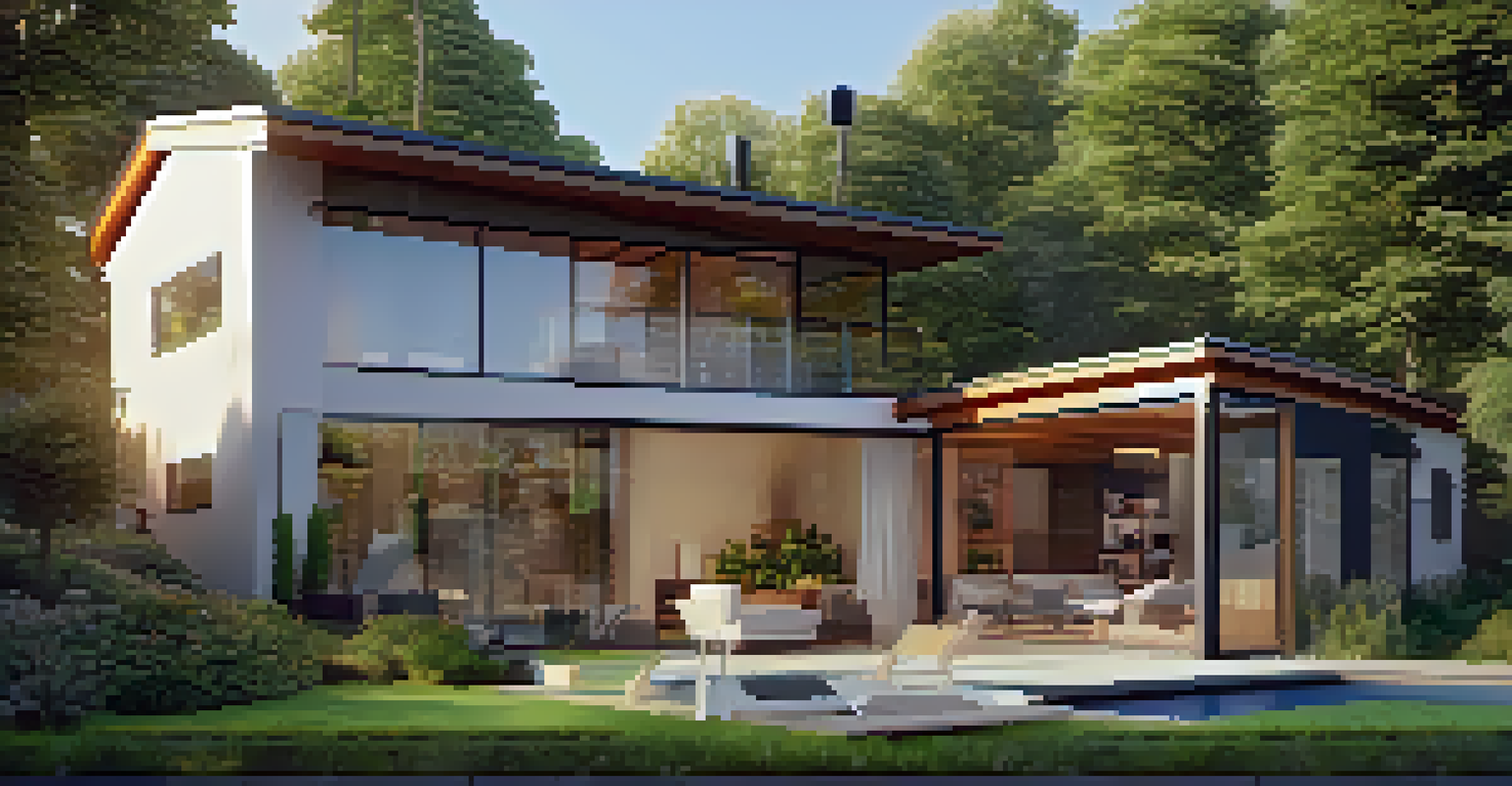Using Home Automation for Efficient Energy Management

Understanding Home Automation Basics for Energy Management
Home automation refers to the control of various devices in your home through the internet. This can include everything from smart thermostats and lighting to security systems. The beauty of this technology lies in its ability to streamline operations and enhance energy efficiency, making your home smarter and more responsive.
The future is already here — it's just not very evenly distributed.
Imagine being able to control your home’s heating or cooling from your smartphone while you're at work. This not only provides convenience but also helps in reducing energy costs by allowing you to adjust settings according to your schedule or preferences. Home automation systems can learn your habits and adjust automatically, leading to optimal energy usage.
For example, if you typically leave for work at 8 AM, your smart thermostat can be programmed to lower the temperature an hour before you leave, ensuring your home isn't wasting energy while you're away. This thoughtful integration of technology translates to both savings and a reduced carbon footprint.
Smart Thermostats: The Heart of Energy Efficiency
Smart thermostats are one of the most popular home automation devices and for good reason. They allow homeowners to regulate their heating and cooling systems more effectively, which can lead to significant savings on energy bills. By learning your schedule and preferences, these devices can adjust settings automatically to match your needs.

For instance, if you consistently lower the temperature at night, a smart thermostat will learn this pattern and automatically adjust your home's temperature accordingly. This means you can enjoy a comfortable night's sleep without worrying about wasting energy overnight.
Home Automation Enhances Energy Efficiency
Integrating smart devices in your home allows for better control of energy consumption, leading to reduced costs and environmental impact.
Furthermore, many smart thermostats come with energy usage reports, helping you understand your consumption patterns. With this data, you can make informed decisions about when to heat or cool your home, ensuring that you are using energy as efficiently as possible.
Lighting Control: Bright Ideas for Saving Energy
Lighting is another area where home automation can significantly impact energy efficiency. Smart lighting systems allow you to control lights remotely, set schedules, and even adjust brightness based on the time of day. This flexibility not only enhances convenience but also contributes to energy savings.
Energy efficiency is not just about saving money; it's about saving the planet.
Consider this: if you often forget to turn off the lights when you leave home, smart lighting can give you peace of mind. You can turn off lights from your phone or set them to turn off automatically after a certain period. This simple addition can lead to reduced energy waste, especially in rooms that are frequently left lit.
Moreover, many smart lighting systems use LED technology, which consumes less energy than traditional bulbs. By combining smart controls with energy-efficient bulbs, you can create a lighting solution that is both effective and environmentally friendly.
Energy Monitoring: Keeping Tabs on Consumption
Energy monitoring systems provide real-time feedback on your home's energy usage, helping you identify where you can cut back. These devices can track and display how much energy each appliance consumes, making it easier to spot energy hogs. Knowing which devices are using the most energy allows for targeted adjustments.
For example, if you discover that your old refrigerator is using significantly more energy than it should, you might consider replacing it with a more energy-efficient model. This proactive approach can lead to substantial long-term savings on your utility bills.
Smart Thermostats Save on Energy Bills
By learning your schedule and preferences, smart thermostats optimize heating and cooling, resulting in significant savings on energy bills.
Additionally, some energy monitoring systems can send alerts when energy usage spikes unexpectedly. This feature can help you take immediate action to investigate issues, such as a malfunctioning appliance, preventing further energy waste and potential costs.
Automated Blinds: Harnessing Natural Light Wisely
Automated blinds are a unique yet effective component of energy management in home automation. By controlling the amount of sunlight that enters your home, they can help regulate indoor temperatures naturally. This means you can reduce reliance on heating and cooling systems, leading to energy savings.
For example, during summer months, automated blinds can close during the hottest part of the day, keeping your home cooler without using air conditioning. Conversely, in winter, they can open to let in sunlight, warming your home naturally. This strategic use of sunlight can help create a more comfortable living environment.
Moreover, many smart blind systems can be programmed to open and close at specific times, aligning with your daily routine. This not only enhances energy efficiency but also adds an element of convenience and modernity to your home.
Integration with Renewable Energy Sources
Home automation systems can also be integrated with renewable energy sources, such as solar panels. This integration allows homeowners to maximize their energy savings by effectively managing energy consumption and production. For instance, when your solar panels generate excess energy, your home automation system can store this energy for later use.
Imagine a scenario where your smart home manages energy usage in real-time, directing power to high-demand appliances when energy is plentiful. This ensures you are using renewable energy whenever possible, leading to lower utility bills and a reduced environmental impact.
Renewable Energy Integration is Key
Combining home automation with renewable energy sources like solar panels maximizes savings and supports sustainable living.
Additionally, some systems can be programmed to use energy during off-peak hours when costs are lower, further enhancing savings. By combining home automation with renewable energy, you can create a sustainable energy ecosystem that benefits both your wallet and the planet.
The Future of Home Automation in Energy Management
As technology continues to evolve, the future of home automation in energy management looks promising. Innovations in artificial intelligence and machine learning are set to make smart homes even smarter. These advancements will enhance the ability of devices to learn from your habits and optimize energy usage automatically.
For example, future systems may be able to predict energy needs based on weather forecasts or changing family schedules. This proactive approach would not only maximize comfort but also ensure that energy is used as efficiently as possible, further reducing costs.

Moreover, as more homeowners adopt smart technologies, the collective impact on energy consumption could lead to significant environmental benefits. With a greater emphasis on sustainability, the future of home automation is not just about convenience—it's about creating a greener world.